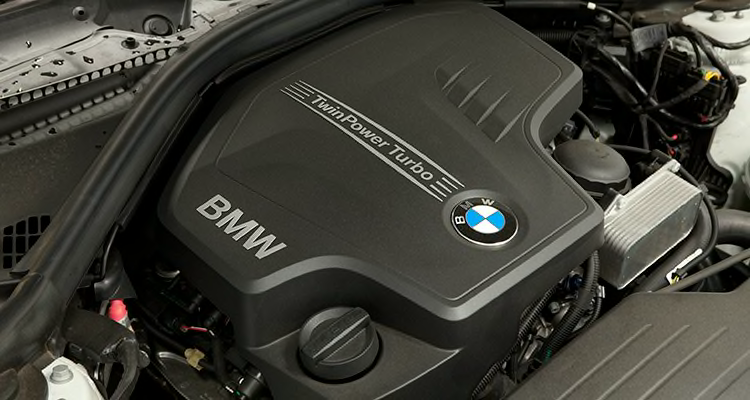To further entice customers into their luxury showrooms, some automakers have been bundling complimentary maintenance programs with their cars, addressing some potential ownership concerns. In an interesting move, BMW recently cut back on their Ultimate Service package, raising the question of how this will impact buyers.
BMW's Ultimate Service has traditionally been one of the more generous packages in both length and breadth of coverage. The original program covered cars for four years or 50,000 miles. It included not only routine maintenance tasks such oil changes and replacement of air filters and spark plugs, but selected wear items as well, including brakes, engine belts, manual-transmission clutches, and even wiper blades. (Read "What Goes Wrong as Cars Age.")
Starting with 2017 model year vehicles, the program (to be renamed Ultimate Care) will be dialed back to 3 years or 36,000 miles. While maintenance items will still be covered, wear items are not.
"About 60 percent of our owners keep their cars for three years or less," notes BMW spokesperson Kenn Sparks. "Therefore, in reality, almost half of our owners weren't using the fourth year of the plan. Even with the changes, we feel that Ultimate Care is still the leading maintenance program in the premium segment."
Of course, more than half of BMW retail sales are leases, commonly on a three-year term. (The automaker is testing certified leases on 2012 and 2013 3 Series and 5 Series cars with maintenance coverage.)

BMW isn't the only company cutting back on free maintenance. Lincoln, Volvo, and Volkswagen have recently made reductions in their complementary service programs, although Jaguar has just expanded theirs to five years or 60,000 miles. Among luxury brands, Audi covers the first service for free; Lexus covers the first two; and Volvo the first three. Lincoln offers two years or 24,000 miles worth of free maintenance, while Cadillac offers four years or 50,000 miles. Most of these programs cover maintenance only—not the wear parts that BMW has eliminated from their program.
Are the cutbacks in BMW's program really a great loss to consumers? For those who keep their cars less than three years or 36,000 miles, the answer is, obviously, no—unless they go through brakes quickly. (More on that in a moment.) For longer-term owners, it's difficult to put a dollar figure on the changes. Like many new cars, BMWs do not have fixed service intervals; instead, the car determines when service is needed based on environmental conditions and the owners' driving habits.
For about a decade BMW maintenance minders were based on oil changes at 15,000 miles and inspections at 30,000 miles. Since 2014, that interval was shortened to 10,000 miles. A major service (which includes replacing the engine and cabin air filters and spark plugs) wasn't required until 60,000 miles, which means it would not be covered by the old program anyway. For most owners, the reduced program will most likely mean missing out on at least one oil service and possibly a minor inspection. (For an idea of the costs of these services, check out the Consumer Reports Car Repair Estimator.)
The elimination of wear parts, particularly brake pads and rotors and manual transmission clutches, could have a bigger impact. A clutch should last much longer than 50,000 miles (unless either the clutch or the driver's technique is defective), but drivers who spend much time in slow traffic or who drive aggressively can easily go through a set of front brakes in the first 30,000 to 40,000 miles. Gentle highway drivers will see much longer brake life.
According to the Consumer Reports Car Repair Estimator, replacing the front brake pads and resurfacing the rotors on a 2015 BMW 328i can range from $282 to $401. If the rotors are replaced rather than resurfaced, the repair can cost between $485 and $687. (The Car Repair Estimator provides local pricing; our estimates are based on our Connecticut-based Auto Test Center.) Under BMW's old maintenance program, this service would have been provided at no charge.
BMW will sell extended maintenance programs (including wear part replacement) under the old Ultimate Service brand name, though pricing had not been determined at the time of writing. One advantage to paying for maintenance ahead of time is that the cost can be rolled into the payments—although that means you'll be paying financing costs on the service plan. BMW's pre-paid maintenance contracts are transferable, so the owner may be able to recover the value if she sells the car before the end of the term.
While it's a shame to see the cutbacks, BMW's program adds some value. Even if the car only requires two oil changes and tire rotations during the first 30,000 miles, we estimate the program would save between $216 and $366. More importantly, the program gives owners and lessors incentive to take the car to the dealership for regular service. This benefits buyers (and sellers) of used BMWs, as it increases the likelihood that these vehicles will have been properly maintained.

















